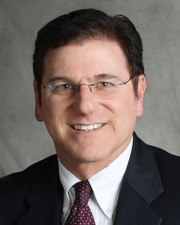News: Front Section
Posted: March 6, 2008
Tested solutions for current problems
The current circumstances in the real estate market have an old familiar ring. It seems that each day's newspapers bring headlines of a deepening crisis that will surely lead to recession. Although currently there are problems in certain sectors and clearly a deepening problem with single-family home foreclosures, this is neither new nor uniquely severe.
Two current problems for which traditional solutions are being brought forth are: the increasing number of single-family foreclosures and the decreased availability of debt financing for investment and development properties. Traditional solutions are being proposed and, in fact, occurring for these problem sectors.
In the case of single-family foreclosures, Senator Christopher Dodd of Connecticut is leading an initiative to re-establish an agency similar to the Home Owners Loan Corporation (HOLC). Senator Dodd is among a growing group of both academics and public figures who believe that this is a tested solution from the 1930s which has application today.
A strong supporter of this initiative is Alan Blinder, a Princeton professor and former vice chairman of the Federal Reserve. As he explains in a recent New York Times article (2/24/08), the HOLC was established in June of 1933 to help distressed families avert foreclosures by replacing mortgages that were in or near default with new ones that homeowners could afford. This was accomplished by buying the mortgages from banks and restructuring mortgages where necessary to make them affordable to the homeowners.
By 1935, the HOLC had received approximately 1.9 million applications from distressed homeowners and granted just over a million new mortgages. Through a careful process of keeping delinquent borrowers on track using debt counseling, budgeting help and even meetings with the families, the HOLC was clearly a success. Over its lifespan, it eventually acquired ownership of nearly 200,000 houses all of which were sold by 1944. In 1951, when HOLC closed its books, a small profit was reported.
Although modifications would likely be made in this business model, it is being given serious consideration as a solution to our current home foreclosure crisis.
The availability of debt financing for investors and developers of commercial property is being solved within the industry itself. As reported in the Boston Business Journal (2/22/08), two real estate companies have stepped up and raised hundreds of millions of dollars for the purpose of providing debt placement and acquisition of commercial real estate loan portfolios. These companies, New York's Tishman Speyer Properties and Intercontinental Real Estate Group of Boston, are proposing a major initiative to provide mezzanine debt to property owners in need of financing. Mezzanine debt, commonly referred to as subordinated debt, in reality is the new version of the old second mortgage.
This unique industry-based solution provides opportunity for both lenders and borrowers to deal with experienced real estate development companies in solving their debt needs.
Although many may feel the current circumstances are a new problem, it is really a recurrence of market cycles seen before. Government intervention is not unprecedented as you may recall FDIC and RTC activities in the early 1990's. Old solutions to these new problems are at hand and likely will build on past successes as we exit the current downturn.
Tags:
Front Section
MORE FROM Front Section
Newmark negotiates sale of 10 Liberty Sq. and 12 Post Office Sq.
Boston, MA Newmark has completed the sale of 10 Liberty Sq. and 12 Post Office Sq. Newmark co-head of U.S. Capital Markets Robert Griffin and Boston Capital Markets executive vice chairman Edward Maher, vice chairman Matthew Pullen, executive managing director James Tribble,

Columns and Thought Leadership

How COVID-19 has impacted office leasing - by Noble Allen and John Sokul
To say that the effects of COVID-19 has transformed office leasing is an understatement. When COVID-19 was at its peak, office spaces were practically abandoned either through governmental mandates or through actions taken by businesses themselves.

Five ways to ruin a Section 1031 Like-Kind Exchange - by Bill Lopriore
While there is some flexibility when structuring a like-kind exchange, some important requirements must be met. A mistake can ruin your exchange. Here are five mistakes to avoid:

Make PR pop by highlighting unique angles - by Stanley Hurwitz
Coming out of the pandemic, a client with three hotels in Provincetown, Mass., needed ways to let the world know his properties were open for business for the 2021 tourist season.

Four tips for a smooth 1031 Exchange - by Bill Lopriore
Many real estate investors do not understand the specific requirements that must be met to secure the benefits of a tax-deferred 1031 exchange. For example, the replacement property must be identified within 45 days of the closing date of the relinquished property.







.png)